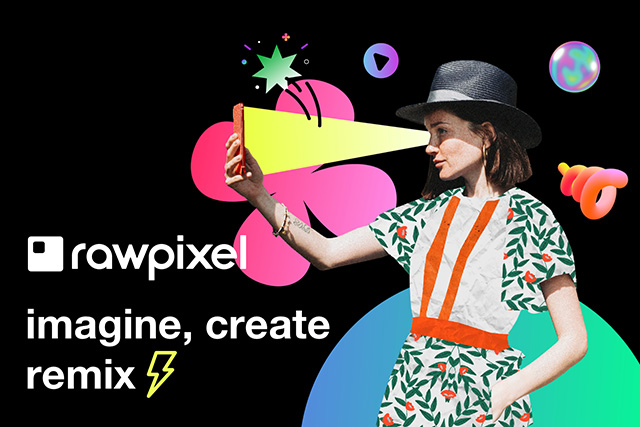Branding for Authors: A Guide for Graphic Designers
Branding isn’t just for businesses—authors need strong branding too. Whether they write fiction, self-help books, or academic works, authors must establish a recognizable identity to attract readers, build credibility, and stand out in a crowded market.
As a graphic designer, you play a crucial role in crafting an author’s brand, from book covers to social media presence and marketing materials. This guide will walk you through the key elements of author branding and provide practical tips on how to create a cohesive and memorable visual identity.
I. Understanding an Author’s Brand Identity
Before diving into design elements, it’s important to understand what branding means for authors. Unlike corporate branding, which focuses on products or services, author branding is about storytelling, personality, and emotional connection with readers.
1. Defining the Author’s Genre & Style
An author’s brand should align with their writing style and genre.
Fiction authors: Branding evokes mood and world-building. For instance, gothic fonts and dark tones suit horror, while pastel colors and script fonts work well for romance.
Non-fiction authors: Branding emphasizes expertise and credibility. Clean layouts, modern typography, and strong visuals help convey trust.
2. Personal vs. Professional Branding
Some authors are their brand, while others focus branding on a book series.
Personal Branding: Common for independent authors, influencers, or motivational speakers. The author’s name is the brand.
Book/Series Branding: Used in fantasy, sci-fi, or crime thriller genres where a book series (e.g., Harry Potter) becomes the focus.
Example: J.K. Rowling – Personal vs. Series Branding
J.K. Rowling's Harry Potter series became a global brand separate from her own name. However, when she wrote The Casual Vacancy, a contemporary novel, she rebranded for a different audience. She also used the pseudonym Robert Galbraith for crime novels, creating a distinct branding identity.
Lesson: If an author writes in multiple genres, branding strategies should adapt accordingly.
3. Target Audience & Market Positioning
An author’s branding should appeal to their ideal readership. Research the target audience by considering:
Age group: Are they young adult readers, business professionals, or academic researchers?
Reading preferences: Do they prefer traditional books, e-books, or audiobooks?
Competition: How do similar authors position themselves, and what can be done differently?
II. Key Branding Elements for Authors
Now that we’ve covered the foundation, let’s explore the essential design elements for branding an author effectively.
1. Logo & Signature Visuals


Should an author have a logo? Not always, but a signature visual identity helps establish recognition.
Name-based logos: A simple yet stylish text logo featuring the author’s name.
Symbolic logos: A small emblem that represents their genre (e.g., a quill for historical fiction authors, a skull for horror writers).
Typography: Font choices should align with the author’s style. Serif fonts create a timeless feel, while handwritten fonts feel personal.
2. Book Cover Consistency
Book covers are the most critical branding element for an author. A strong book cover design should:
- Reflect the genre and themes of the book.
- Maintain consistency across a series with colors, typography, or layout.
- Stand out in digital marketplaces where thumbnails are small.
Example: Stephen King – Strong Visual Identity
Stephen King’s books are instantly recognizable due to bold typography, dark color palettes, and eerie imagery. His branding extends beyond book covers—his name itself is associated with horror and suspense.

Lesson: A consistent visual theme across book covers helps build instant recognition.
3. Author Website & Digital Presence
A well-branded author website should include:
- Homepage: A professional introduction with the latest book releases.
- About Section: Personal storytelling that builds a connection with readers.
- Book List: Showcasing book covers with purchase links.
- Blog or News Section: Updates, behind-the-scenes stories, or writing tips.
- Newsletter Signup: Essential for building a loyal reader base.
Example: Malcolm Gladwell – Non-Fiction Branding
Malcolm Gladwell’s website and book covers maintain a clean, intellectual aesthetic. His covers often feature minimalist typography and symbolic imagery, reinforcing his brand as a thought leader.

Lesson: Non-fiction authors benefit from branding that communicates authority, simplicity, and clarity.
4. Social Media & Content Strategy
Choosing the right platform is key:
- Twitter (X): Great for engaging with the writing community and sharing updates.
- Instagram: Perfect for visually appealing book covers, quotes, and behind-the-scenes content.
- TikTok (BookTok): A rising trend for authors promoting books to younger audiences.
Example: Colleen Hoover – Leveraging Social Media
Colleen Hoover became a best-selling author through BookTok. Her minimalist book covers align with her branding, and she actively engages readers on social media, making her brand feel personal and authentic.
Lesson: Social media can be a powerful branding tool when paired with a simple yet distinct design approach.
III. Branding Challenges & How to Overcome Them
- Maintaining consistency across different book series: Use a consistent design element, like typography or color schemes, to tie them together.
- Rebranding after a genre switch: If an author moves from horror to romance, a visual shift is necessary, but elements like a signature font or color accent can maintain brand recognition.
- Avoiding generic design: Overused design elements (e.g., cliché fonts, generic stock images) can make an author blend into the crowd. Always aim for originality.
IV. Conclusion
Branding plays a crucial role in an author’s success, helping them connect with readers, sell more books, and establish a long-lasting presence. As a graphic designer, you can bring an author’s brand to life through thoughtful design choices.
If you’re working with an author, start by understanding their genre, audience, and personal style. Then, create a cohesive branding strategy that extends across all touchpoints—digital and print.
Are you ready to help an author shape their brand? Start brainstorming ideas and bring their storytelling vision to life through design!
Tags
Subscribe
Join the Advise Graphics community and get exclusive design resources, tips, and updates delivered straight to your inbox.
Quick links
Copyright
© 2025 Advise Graphics. All rights reserved.
Cop© 2025 Advise Graphics. All rights reserved.











